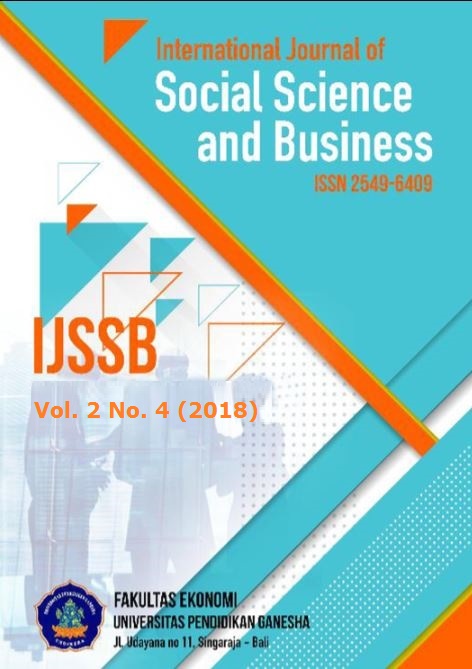The Application of Strategic Human Resource Practice Based on Tri Kaya Parisudha to Improve The Performance of Village Financial Institution Employees in Buleleng Regency
DOI:
https://doi.org/10.23887/ijssb.v2i4.16339Keywords:
Strategic Human Resource Practice, Tri Kaya Parisudha, Employee PerformanceAbstract
The purpose of this study was to determine the effect of Skill Employment based Tri Kaya Parisudha, Affective Commitment, Reward Management toward the Employee Performance. This research was explanatory with the form of causality between variables. The number of samples in this study were 51 respondents selected based on the Stratified Random Sampling method. The data analysis technique used in this study was the structural equation model (Structural Equation Modeling-SEM) based on variance or Component based SEM with the SmartPLS 3.0 analysis tool. The conclusion of this study was Strategic Human Resource Practice based Tri Kaya Parisudha can be applied in the Village Financial Institution Buleleng Regency to improve the Employee Performance of Village Financial Institution in Buleleng RegencyReferences
Armstrong, M. (2014). Armstrong’s Essential Human Resource Management Practice A Guide To People Management. USA: British Library Cataloguing.
Bali, P. L. (2014). Majelis Utama Desa Pakraman. Bali.
Brown, D. (2011). Performance Management-can it ever work? London: CIPD.
Devi, E. K. D. (2009). Analisis Pengaruh Kepuasan Kerja Dan Motivasi Terhadap Kinerja Karyawan Dengan Komitmen Organisasional Sebagai Variabel Intervening (Studi Pada Karyawan Outsourcing Pt Semeru Karya Buana Semarang). Universitas Diponegoro.
Ghozali, I. (2008). Structural Equation Modeling Metode Alternatif dengan Partial Least Square (Kedua). Yogyakarta: Universitas Diponegoro.
Hasibuan, M. S. P. (2010). Manajemen Sumber Daya Manusia. Jakarta: Bumi Aksara.
John M. Ivancevich, Robert Konopaske, M. T. M. (2008). Organizational Behavior and Management. New York: McGraw-Hil.
Marwansyah. (2014). Manajemen Sumber Daya Manusia (Kedua). Bandung: Alfabeta.
Murty, W. A., & Hudiwinarsih, G. (2012). Pengaruh Kompensasi, Motivasi dan Komitmen Organisasional. Pengaruh Kompensasi, Motivasi Dan Komitmen Organisasional Terhadap Kinerja Karyawan Bagian Akuntansi, 2(2), 215–228. https://doi.org/10.14414/tiar.v2i02.97
Newstorm, J. W. (2011). Organizational Behavior. New York: McGraw-Hill.
Prastiwi, Ni Luh Putu Eka Yudi, A. A. N. O. S. G. (2016). Competitive Advantage, Strategic Human Resource Practice, Knowledge Management and Corporate Social Responsibility. Jurnal Manajemen Dan Bisnis, Volume 13,. Retrieved from http://journal.undiknas.ac.id/index.php/magister-manajemen/
Sukamto, H., Junarto, Y., Kaihatu, T., Kartika, E. W., Perhotelan, M., & Petra, U. K. (2012). Analisa pengaruh komitmen afektif, komitmen normatif, dan komitmen berkelanjutan terhadap. Management&Marketing, 4(Mei), 466–478.
Sunetra, I. M. (2007). Manajemen Spiritual dalam Bisnis. Pustaka Bali.











